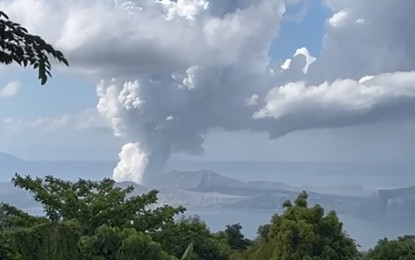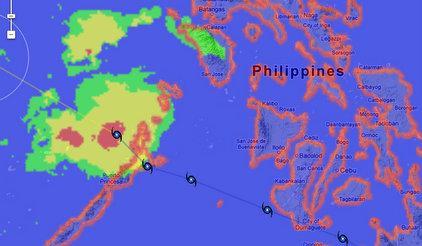In marking World Meteorological Day, United Nations (UN) Secretary-General António Guterres declared the need for early warning systems covering the entire world in the immediate future. With the World Meteorological Organization (WMO) at its spearhead, the agency will lead the effort and present an action plan in November at this year’s UN climate conference (COP 27) in Egypt.
“We must invest equally in adaptation and resilience,” said Guterres, “That includes the information that allows us to anticipate storms, heatwaves, floods and droughts.”

The secretary-general added that it was unacceptable for one-third of the world’s people – living mainly in least developed countries (LDCs) and small island developing States (SIDS) – being uncovered by early warning systems. In Africa, for instance, up to 60 percent of the people lack coverage.
Over the past 50 years, a climate or water-related disaster has occurred on average each day – taking the lives 115 people and causing daily losses of USD 202PHP 11,854INR 17,119EUR 192CNY 1,470 million, according to a 2021 WMO disaster statistics report. When accounted in total, this meant over 2 million deaths and nearly USD 3.7PHP 217INR 314EUR 4CNY 27 trillion in losses since the 1970s. The same report suggested that investing USD 800PHP 46,948INR 67,800EUR 762CNY 5,823 million on early warning systems in developing countries alone would avoid up to USD 16PHP 939INR 1,356EUR 15CNY 116 billion in annual losses.
Although the number of recorded disasters has increased by fivefold over that period, improved early warnings and disaster management have saved the lives of many. World Meteorological Organization Secretary General Petteri Taalas cited that some USD 1.5PHP 88INR 127EUR 1CNY 11 billion in the next five years to realize the UN plan.

In relation to this, the Philippines has consistently been ranked in the Global Climate Risk Index as among the countries most affected by climate change. With a CRI score of 18.17 from the period 2000 to 2019, the Philippines is 3rd in the world in terms of long-term climate risk among sovereign nations, following Haiti and Myanmar. The lower the score, the higher the risk.
Nonetheless, a 2019 report by the Asian Disaster Preparedness Center and the United Nations Office for Disaster Risk Reduction (UNDRR) noted that the Philippines has regularly updated its hazard forecasting and monitoring equipment. As of 2015, the country has 74 seismic stations for earthquake monitoring, 36 tsunami detection stations, 6 volcano observatories and 10 tsunami early warning systems. There are also 19 National Mapping and Resource Information Authority (NAMRIA) sea level monitoring stations, and over 1,000 Philippine Atmospheric, Geophysical and Astronomical Services Administration (PAGASA) automated weather stations.
“The Philippines is highly vulnerable to the effects of climate change and this year’s Earth Hour is a good reminder that climate change and global warming are real issues that we need to pay more attention to and require urgent action,” said Acting Presidential Spokesperson Martin Andanar.
Earth Hour is annually observed every last Saturday of March. It will be observed through a “digital on-the-night doubling,” which would serve as an avenue to communicate the urgent need for world leaders to come up with a global action plan for the betterment of nature in the coming decade.

YugaTech.com is the largest and longest-running technology site in the Philippines. Originally established in October 2002, the site was transformed into a full-fledged technology platform in 2005.
How to transfer, withdraw money from PayPal to GCash
Prices of Starlink satellite in the Philippines
Install Google GBox to Huawei smartphones
Pag-IBIG MP2 online application
How to check PhilHealth contributions online
How to find your SIM card serial number
Globe, PLDT, Converge, Sky: Unli fiber internet plans compared
10 biggest games in the Google Play Store
LTO periodic medical exam for 10-year licenses
Netflix codes to unlock hidden TV shows, movies
Apple, Asus, Cherry Mobile, Huawei, LG, Nokia, Oppo, Samsung, Sony, Vivo, Xiaomi, Lenovo, Infinix Mobile, Pocophone, Honor, iPhone, OnePlus, Tecno, Realme, HTC, Gionee, Kata, IQ00, Redmi, Razer, CloudFone, Motorola, Panasonic, TCL, Wiko
Best Android smartphones between PHP 20,000 - 25,000
Smartphones under PHP 10,000 in the Philippines
Smartphones under PHP 12K Philippines
Best smartphones for kids under PHP 7,000
Smartphones under PHP 15,000 in the Philippines
Best Android smartphones between PHP 15,000 - 20,000
Smartphones under PHP 20,000 in the Philippines
Most affordable 5G phones in the Philippines under PHP 20K
5G smartphones in the Philippines under PHP 16K
Smartphone pricelist Philippines 2024
Smartphone pricelist Philippines 2023
Smartphone pricelist Philippines 2022
Smartphone pricelist Philippines 2021
Smartphone pricelist Philippines 2020